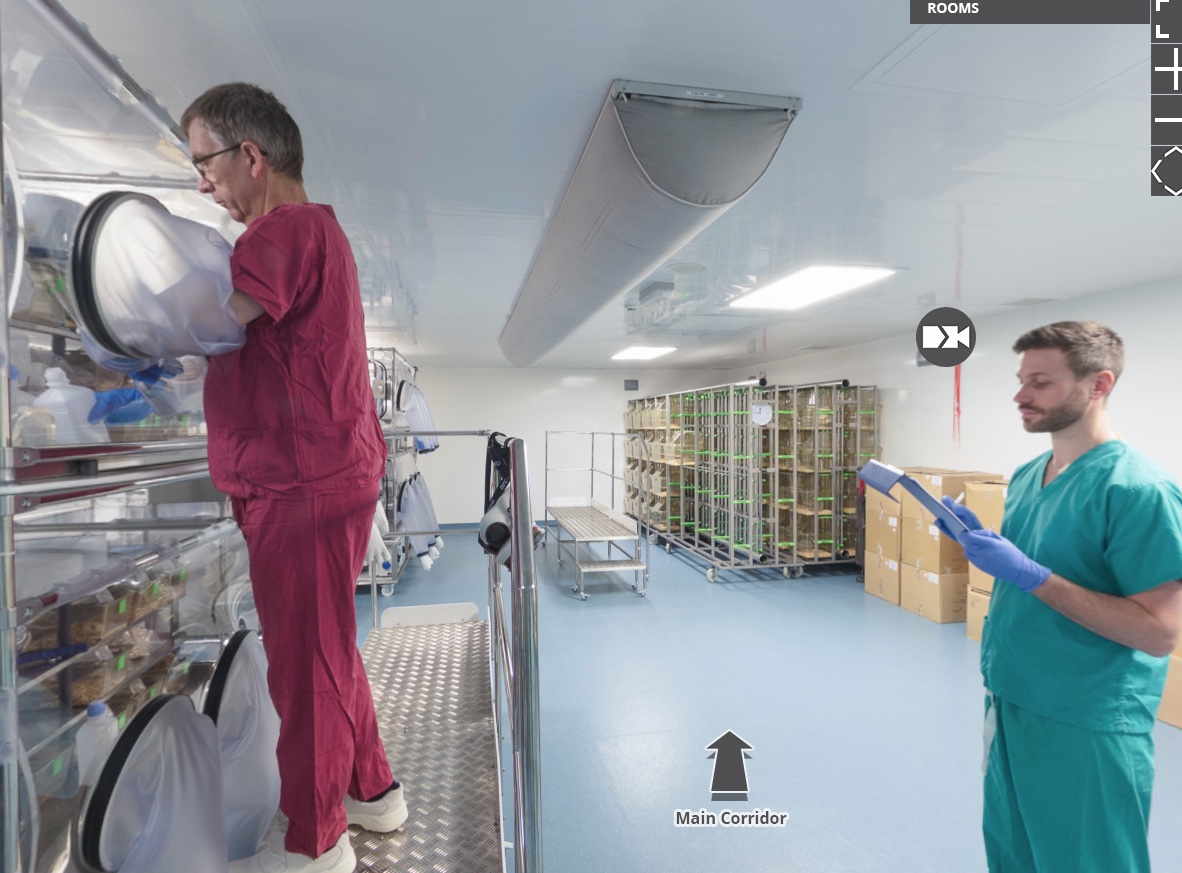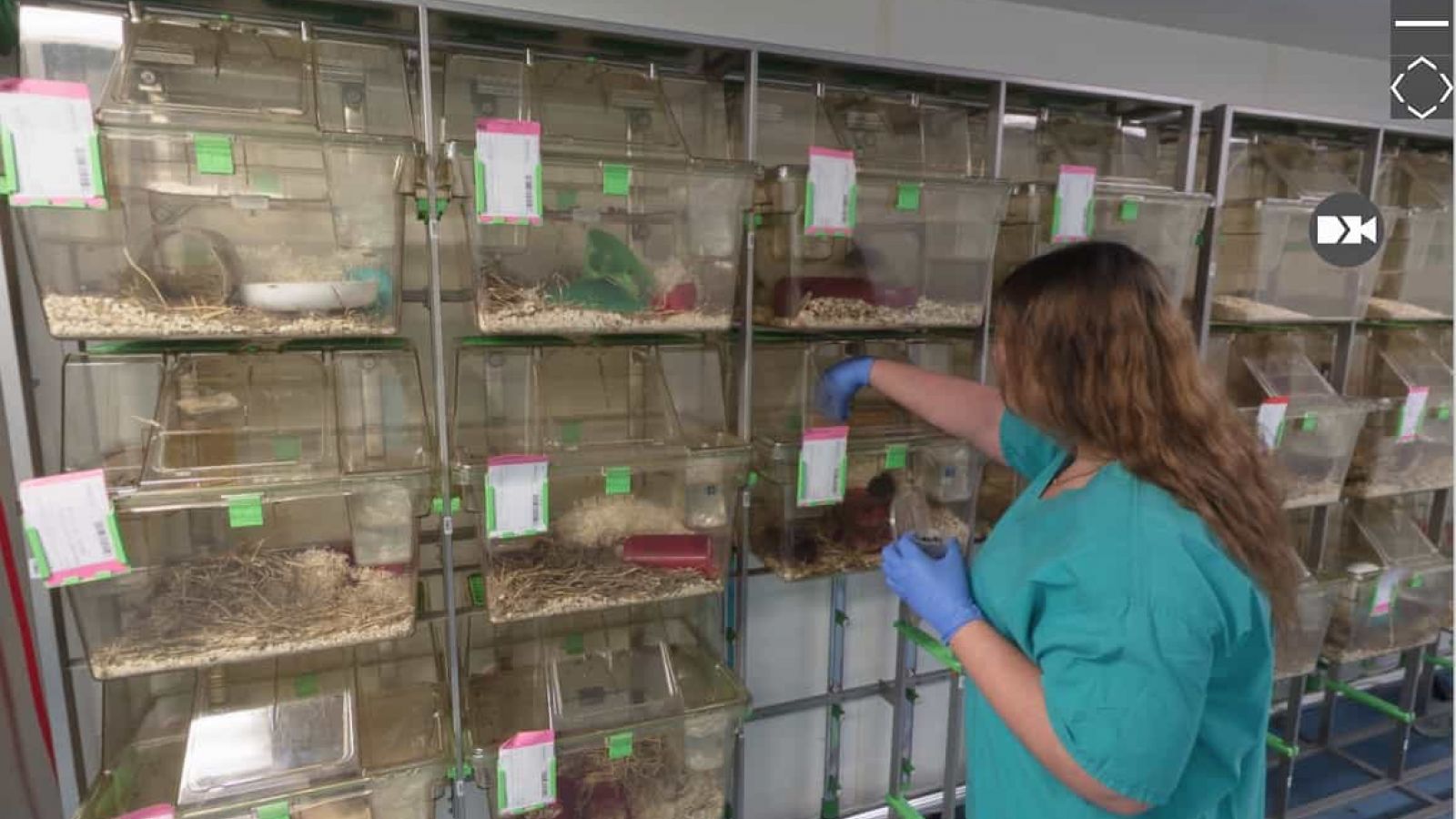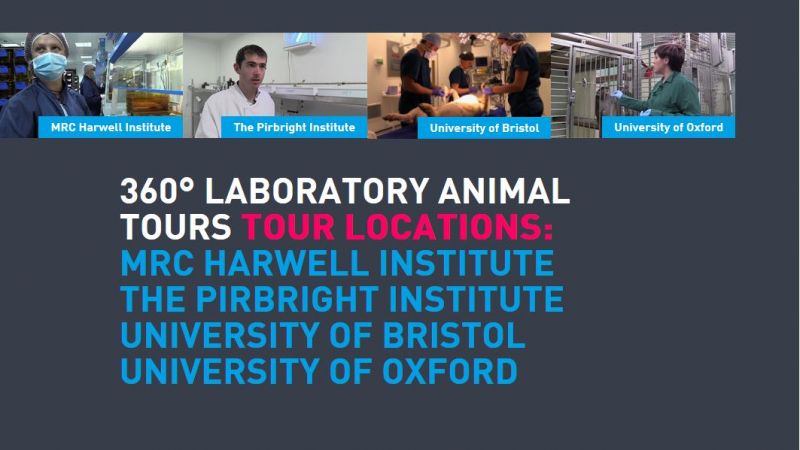Manchester University has launched the first animal unit virtual tour to be embedded in an institutions main website.
With eleven rooms and sixteen videos Manchester University's new animal unit 360 tour allows the viewer to look around an excellent sample of the universities animal facilities. Rooms with sheep, mice, rats, striped mice, zebrafish and even dogfish are on show. Each room includes one video with laboratory technicians Sarah and Alan explaining what you can see around you. Five of the rooms also include videos of scientists talking about their work.
The visitor will see a rich variety of scientific work from Paul Kasher's description of how he uses embryo zebrafish to study treatments for haemorrhagic stroke to Daniel Ripley explaining how he is raising dogfish at different temperatures to investigate the potential impact of warming seas.
Dhifal Jasim illustrates the latest non-invasive methods such as MRI for seeing inside the living animal. This avoids the need to sacrifice animals at different stages of long-term studies and contributes to a great reduction in the numbers of animals required.
Perhaps not surprisingly, medical research is the main focus of much of the work here. Sinead Savage shows us experiments with rats to study treatments for Parkinson’s disease. Rat's can be operated on with such precision that they will exhibit Parkinsonian-like symptoms on only one side of their body. This allows the normal side to be compared to the modified side when the animal is given trial treatments to reduce the symptoms, and as only half the animal is modified to induce symptoms, each rat is it's own control.
The final example is Riccardo Storchi describing his use of mice to study treatments for retinal degeneration. Currently there are several promising treatments for the retinal degeneration that will ultimately lead to blindness if left unchecked. However the methods for evaluating these treatments in animals are all different making it difficult to decide which approach is most effective. Riccardo aims to establish a non-invasive standard method of measuring the decline in a mouses ability to see, so that mice that have been given different treatments for retinal degeneration can be compared.
The combination of images and videos gives a realistic insight into the work inside a modern university research facility and allows the viewer to 'see and hear for themselves' the role animals play in a wide range of medical and environmental research.
The full link is https://www.manchester.ac.uk/research/environment/governance/ethics/animals/virtual-tour/
The university also invites you to ask questions about their work at animal.research@manchester.ac.uk

Last edited: 8 March 2022 09:37


